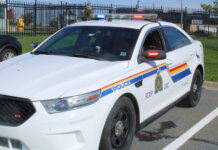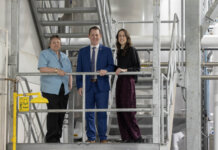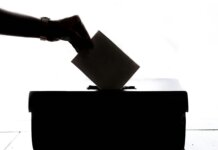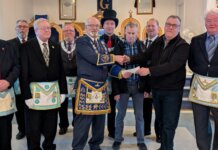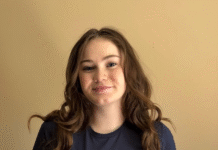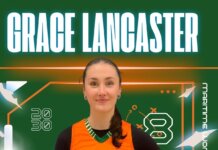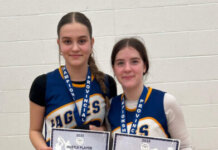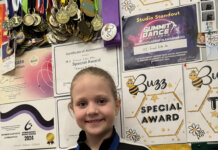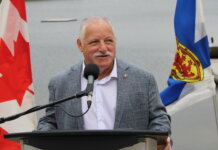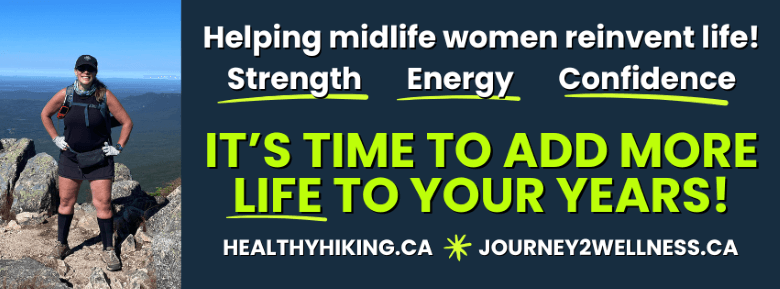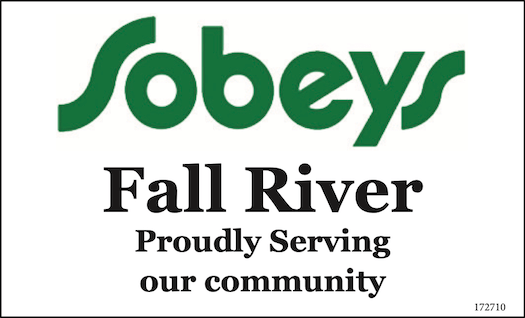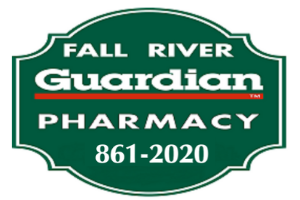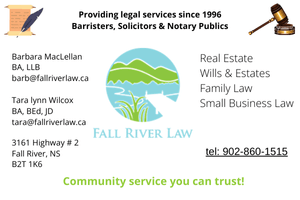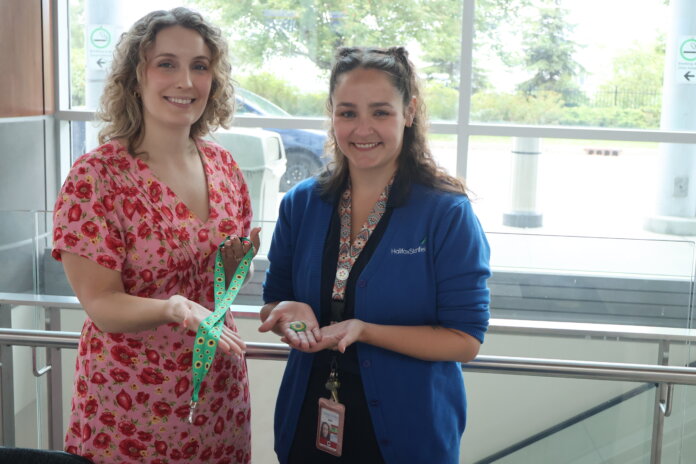
HALIFAX STANFIELD: Three new accessible programs and services have been unveiled at Halifax Stanfield Airport.
At a launch on Aug. 20, officials with the Halifax International Airport Authority announced the Enfield-based airport will now have the Sunflower program; use of the Aria App; and Hearing loops.
Leah Batstone, spokeswoman with HIAA, said the inclusion of all three new services are aimed at making the airport more accessible for all.
“The first program is called the Sunflower Program. It’s already implemented at many other airports, and it’s recognized by many airlines and their staff and other airport staff,” she said.
“Essentially, the sunflower program is a way for travelers that perhaps have a hidden disability or some other need to identify themselves to people working at the airport, indicating that they need a little extra help, a little extra time, and maybe some more support.
“The sunflower program is identified by a sunflower logo on a lanyard or a pin or a button.”
ADVERTISEMENT:
Batstone said if one works at the airport there’ll be a training program and everyone will know to look for that symbol and to treat those people with a little extra care and time and, consideration that they might need more support.
“The second program that we’ve launched today is called Aria. It’s an app that assists people, with navigation when they’re visually impaired.”
She explained Aria is an app that people can download. There’s a paid version, but there’s also a free version.
“Anyone with the app when they come to Halifax Stanfield now, they will get a notification that we offer the app here at the airport, and what that means is that when people have the app, they basically sign in and they start a call,” Batstone explained. “They’re connected with a trained-on demand professional who is able to navigate them through the phone.
“It’s like they see through the camera like a FaceTime call, but the camera’s facing out, so it’s their eyes and then they can navigate themselves and the person assisting can ask them to look around and see what is there and tell them “Oh, I see the sign for check in, head to your left”?
“That will allow the person who’s visually impaired to be able to follow their direction and get where they need to go. It’s really cool.”
ADVERTISEMENT:
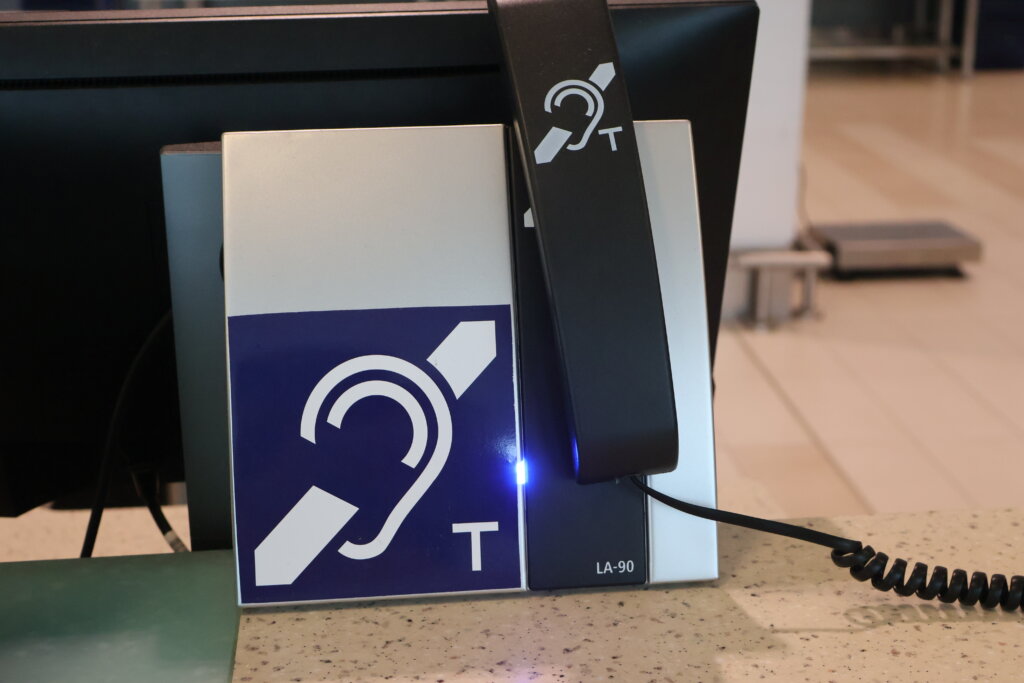
Batstone said the third program or service that was rolled out is called Hearing Loops.
“It’s a technology that’s used in many other places,” said Batstone. “It’s essentially a technology that uses existing people’s existing hearing aids or cochlear implants to amplify the audio through Bluetooth and through the technology that it uses.
“Those are in place at all of the check in counters and at the gates once you get through security. Also at our ground transportation booth and the volunteer booths and I think the visitor information center booth.”
She said basically any booths and counters have a Hearing Loop now.
“If someone’s hearing impaired and they have a compatible hearing aid, they can put it on the right setting that they need it on and they can hear better audio through the microphone that now is on the other side,” said Batstone. “They’re all identified with the symbol there with the ear and the line through it. That’s like an internationally recognized symbol.
“We have those signs there so people know you can switch your hearing aid and get that audio through there.”
What if people don’t have the right compatible hearing aid?
“If people don’t have the right compatible hearing aid, we also have a telephone there that anyone that has maybe trouble hearing can just pick it up and they’ll get a clearer audio through the phone,” she responded.
ADVERTISEMENT:
What are the programs:
• The Sunflower Program offers travellers and airport visitors with non-visible (hidden) disabilities and needs to signal to airport employees that they may require additional support.
• The Aira App, in combination with a smartphone, allows travellers to connect to Aira-trained professionals for on-demand assistance to visual information to help them as they navigate the airport.
• Hearing Loops is a revolutionary technology designed to improve the understanding of speech for individuals with compatible hearing aids or cochlear implants. Eliminating background noise and directly transmitting sound to hearing devices will enhance the experience of travellers and airport visitors with hearing impairments throughout the airport.
ADVERTISEMENT:
Batstone said the milestone reflects HIAA’s ongoing commitment to inclusivity and ensuring that all travellers and airport visitors feel empowered when navigating the airport. All three programs and accessibility services are now available to individuals with visual and hearing impairments and hidden disabilities.
“In general we’re just trying to continue enhancing the offerings that we have here in terms of services, programs, technology to make the airport more accessible for all,” she said. “Regardless of your ability, of your background, anything we want all people to be welcome and safe and when they come here to also be able to get through the airport with no barriers.
“This is just a way that we’re trying to do that, and we’re just going to keep doing more.”
She didn’t have the cost for the new programs available with her but said it’s an investment HIAA is glad to make to offer these services to the community.
“At the end of the day, we’re just looking to do what we can, spend what’s needed to be able to offer the best services to the community,” said Batstone.


